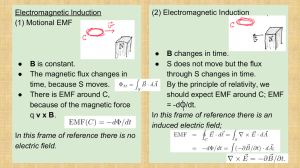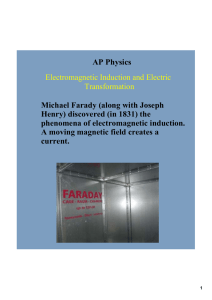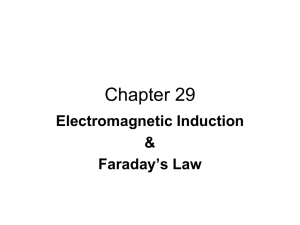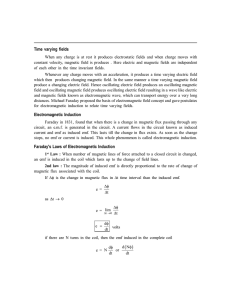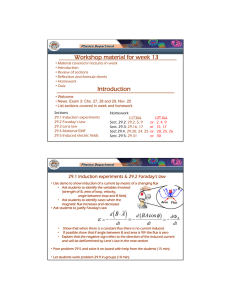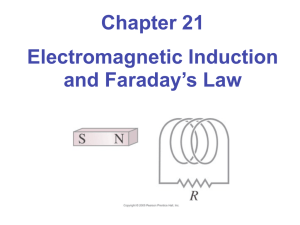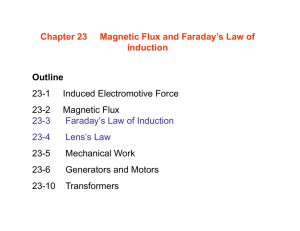Electromagnetic induction
advertisement
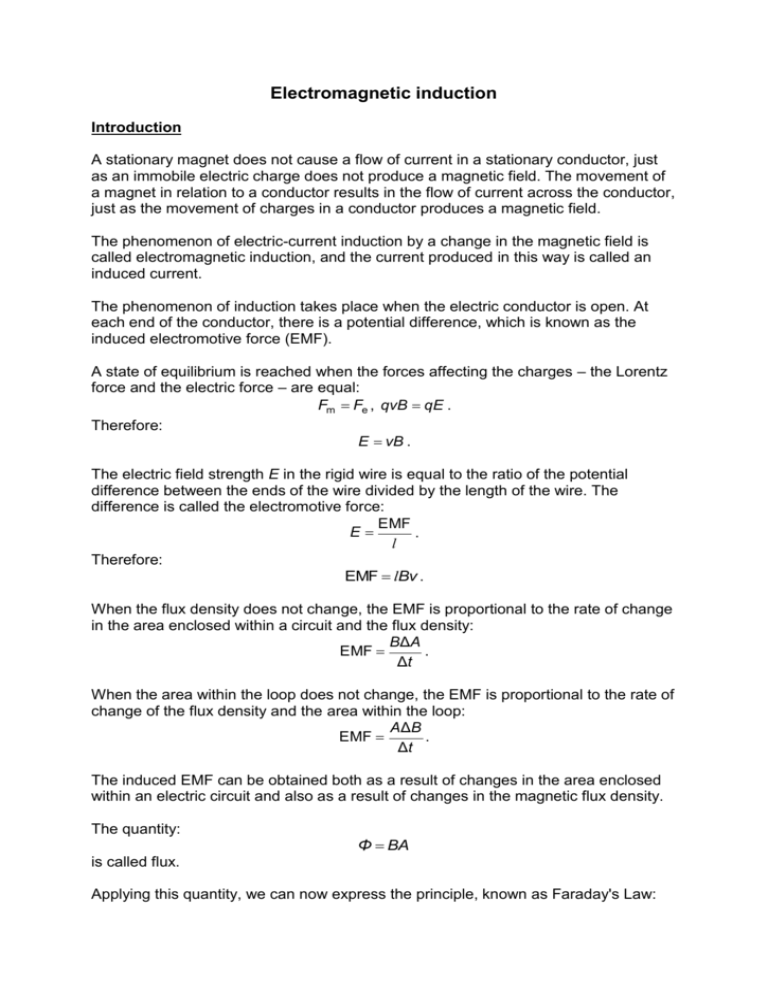
Electromagnetic induction Introduction A stationary magnet does not cause a flow of current in a stationary conductor, just as an immobile electric charge does not produce a magnetic field. The movement of a magnet in relation to a conductor results in the flow of current across the conductor, just as the movement of charges in a conductor produces a magnetic field. The phenomenon of electric-current induction by a change in the magnetic field is called electromagnetic induction, and the current produced in this way is called an induced current. The phenomenon of induction takes place when the electric conductor is open. At each end of the conductor, there is a potential difference, which is known as the induced electromotive force (EMF). A state of equilibrium is reached when the forces affecting the charges – the Lorentz force and the electric force – are equal: Fm Fe , qvB qE . Therefore: E vB . The electric field strength E in the rigid wire is equal to the ratio of the potential difference between the ends of the wire divided by the length of the wire. The difference is called the electromotive force: EMF E . l Therefore: EMF lBv . When the flux density does not change, the EMF is proportional to the rate of change in the area enclosed within a circuit and the flux density: B ΔA EMF . Δt When the area within the loop does not change, the EMF is proportional to the rate of change of the flux density and the area within the loop: A ΔB EMF . Δt The induced EMF can be obtained both as a result of changes in the area enclosed within an electric circuit and also as a result of changes in the magnetic flux density. The quantity: Φ BA is called flux. Applying this quantity, we can now express the principle, known as Faraday's Law: EMF ΔΦ . Δt Summarising, Faraday’s Law states that the magnitude of the induced electromagnetic force in a closed loop placed in a magnetic field is proportional to the rate of change of the magnetic field. A the end of the lesson you should be able to: describe the phenomenon of induction, explain and use the Lentz’s Law and Faraday’s Law, describe the origin of eddy currents. Electromagnetic induction Worksheet How do we induce current flow using a magnet? ………………………………………………………………………………………………… ………………………………………………………………………………………………… ………………………………………………………………………………………………… ………………………………………………………………………………………………… What does an induced current depend on? ………………………………………………………………………………………………… ………………………………………………………………………………………………… ………………………………………………………………………………………………… ………………………………………………………………………………………………… What is the direction of the induced current? ………………………………………………………………………………………………… ………………………………………………………………………………………………… ………………………………………………………………………………………………… …………………………………………………………………………………………………



